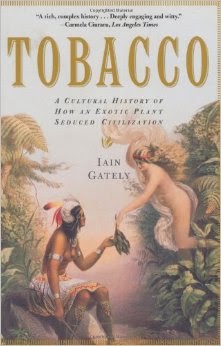The Age of Voltaire: A History of Civilization in Western Europe from 1715 to 1756
898 pages
© 1965 Will and Ariel Durant
The ninth work in Will Durant’s sweeping Story of Civilization, The Age of Voltaire picks up with the death of the Sun King in the dawn of the Enlightenment. It’s an age of tumultuous change; though its survey ends before the French revolution, Europe is already in the throes of the industrial and scientific revolutions. New worlds are opening; not only are new goods flowing in from the recently-discovered parts of the globe, but western man’s entire worldview is shifting. The modern age is dawning.
898 pages
© 1965 Will and Ariel Durant
The ninth work in Will Durant’s sweeping Story of Civilization, The Age of Voltaire picks up with the death of the Sun King in the dawn of the Enlightenment. It’s an age of tumultuous change; though its survey ends before the French revolution, Europe is already in the throes of the industrial and scientific revolutions. New worlds are opening; not only are new goods flowing in from the recently-discovered parts of the globe, but western man’s entire worldview is shifting. The modern age is dawning.
Of course, in this era it's less a gentle tide and more of a water-cannon. The radicals of the era are not content with careful, prudent change; no, things must be set on fire. Christianity is beyond reform for the rising philosophes; the world must be overturned, priests must die, churches must be burned. This is the cradle of the French revolution, the nursery of those who would take a machete to society until their ideals are satisfied. On a more constructive note, science and technological prowess are abounding, and Durant sets aside a large segment of the book to look at it seperately.
Durant is a genteel moderate on the religion and philosophy debate; from Our Oriental Heritage on, he has favored religion as an institution offering stability, comfort, beauty, and more to the human race, though he is never blind to its abuses. His conclusion, a dialogue between a pope and Voltaire, makes plain his attitude that the tumultuous era his history is heading into is one of mixed blessings; while Durant is thankful that the rise of the philosophes advanced human liberty, checking the abuses of monarchy and organized religion alike, in their enthusiasm they became arrogant.
p. 788
As with his judgment of the impact of the reformation, the entire dialogue puts his tender appreciation for both sides, and the wisdom in appreciating them both, on display. I suspect his criticism will grow a little sharper in the next volume.
Durant is a genteel moderate on the religion and philosophy debate; from Our Oriental Heritage on, he has favored religion as an institution offering stability, comfort, beauty, and more to the human race, though he is never blind to its abuses. His conclusion, a dialogue between a pope and Voltaire, makes plain his attitude that the tumultuous era his history is heading into is one of mixed blessings; while Durant is thankful that the rise of the philosophes advanced human liberty, checking the abuses of monarchy and organized religion alike, in their enthusiasm they became arrogant.
Benedict: You thought it possible for one mind, in one lifetime, to acquire such scope of knowledge and depth of understanding as to be fit to sit in judgment upon the wisdom of the race --upon traditions and institutions that have taken form out of the experience of the centuries. Tradition is to the group what memory is to the individual; and just as the snapping of memory may bring insanity, so a sudden break with tradition may plunge a whole nation into madness like France and the revolution. [....] We should be allowed to question traditions and institutions, but with care that we do not destroy more than we can build.
p. 788
As with his judgment of the impact of the reformation, the entire dialogue puts his tender appreciation for both sides, and the wisdom in appreciating them both, on display. I suspect his criticism will grow a little sharper in the next volume.









